True refuge demands a complete and utter trust fall into the arms of reality. –Miles Neale
There was something a bit off when we drove into the parking lot of Blue Hill Trail at Sherburne National Wildlife Refuge. I saw prairie land, a big hill, and some scattered trees. I couldn’t identify what didn’t seem right. We readied ourselves for the four or five mile loop, then set out on the sandy trail. Almost at once I noticed the standing totem of a burnt tree—not unusual in any place we hike. But the colorful-for-Fall Sumac seedheads were much more delightful.
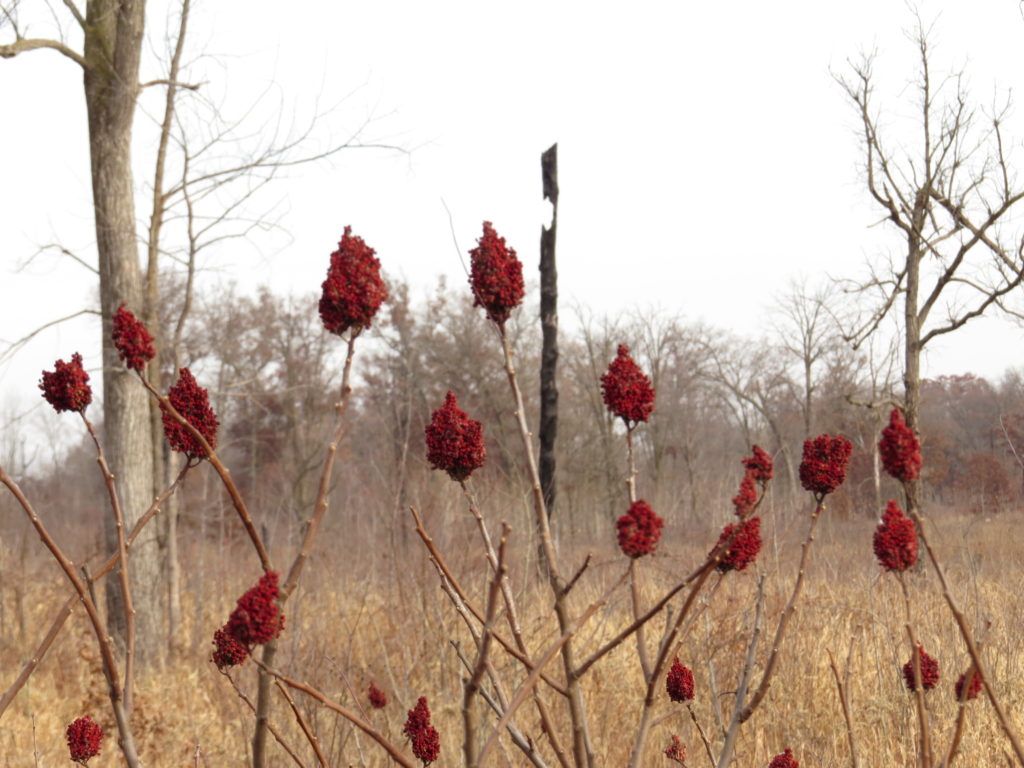
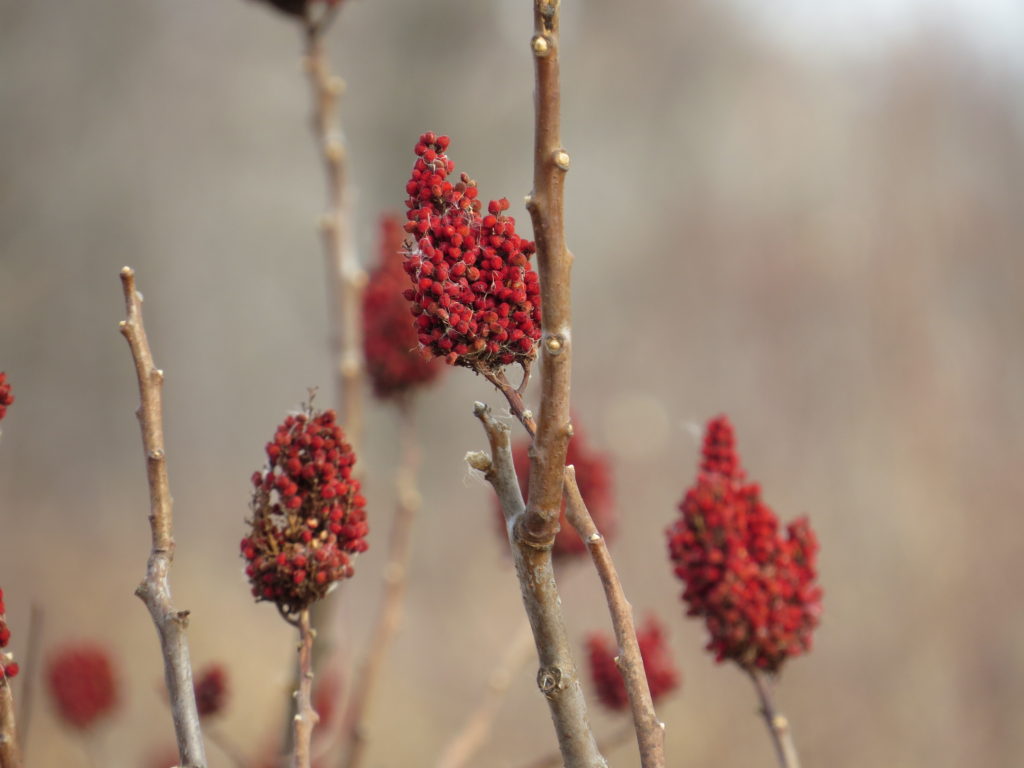
It was not long before we saw other burnt, dead tree trunks. Had there been a wildfire here? Most of the trees were Oak—White Oaks who had dropped their leaves and Red Oaks who were still adorned in their rust-colored finery.
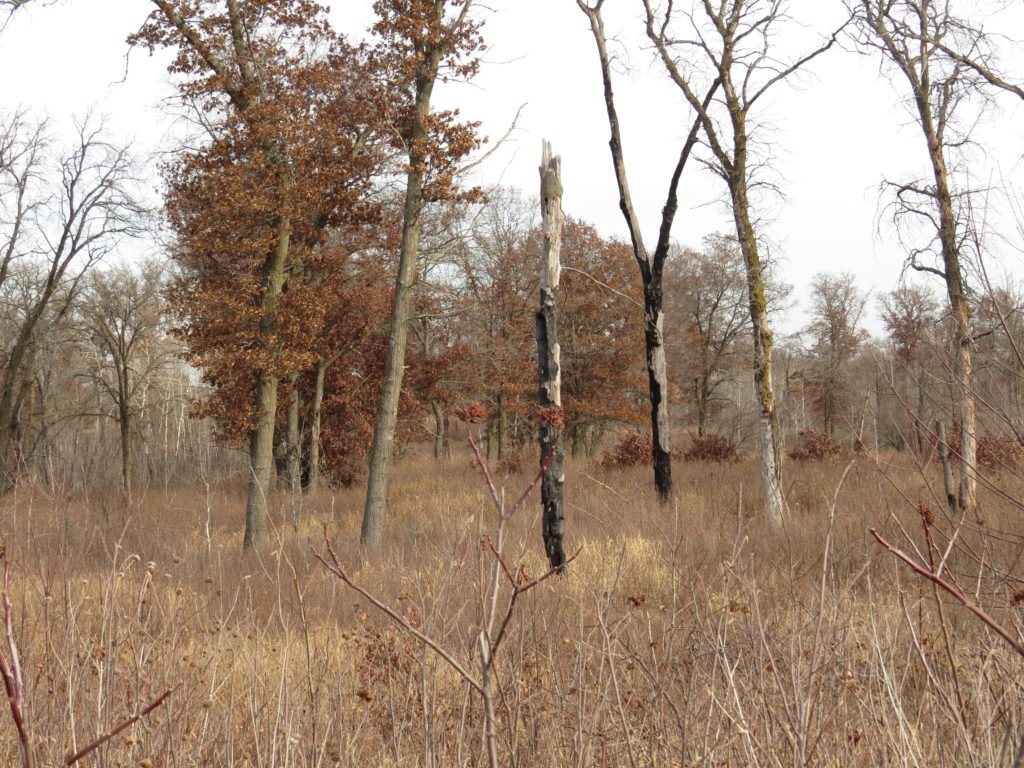
From that point on, most every tree we saw had been damaged by fire. The big, beautiful Oaks were in various stages of decline—some were dead and fallen, others were dead and standing, and quite a few others were alive, but distorted in their growth. That’s what was off about my first impression—the trees no longer had a normal canopy for the size of the tree. Lower branches were gone, some limbs were dead, and the rest of the foliage was concentrated towards the top of the very tall trees. Survival seemed very uncertain for the standing, living dead.
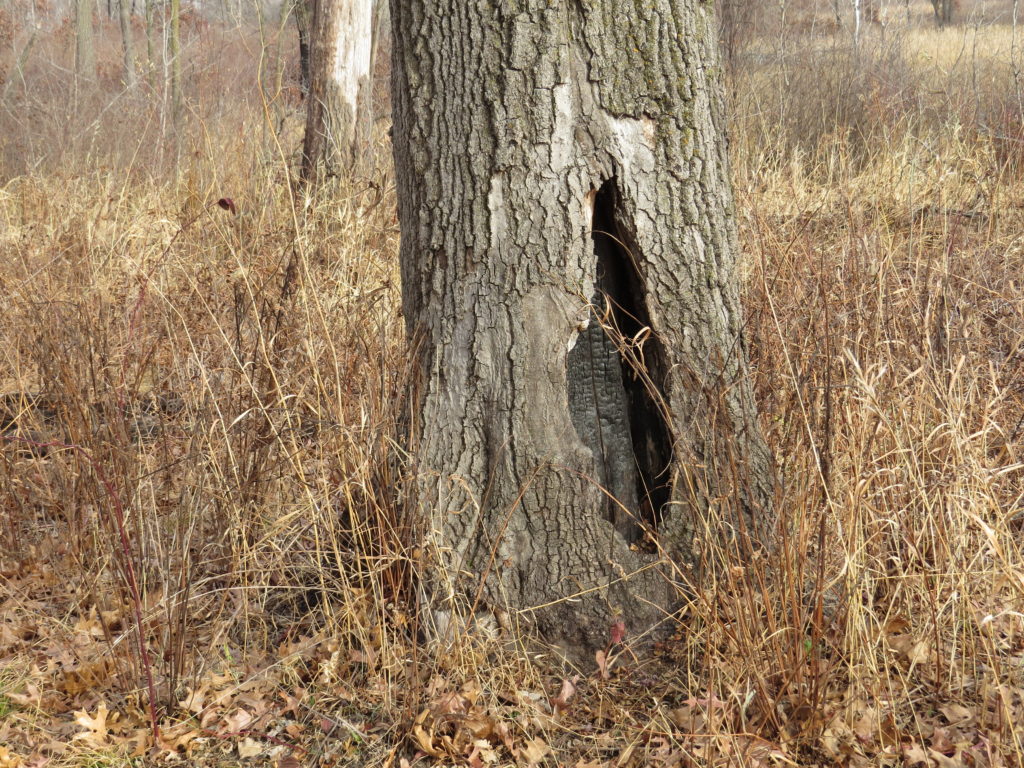
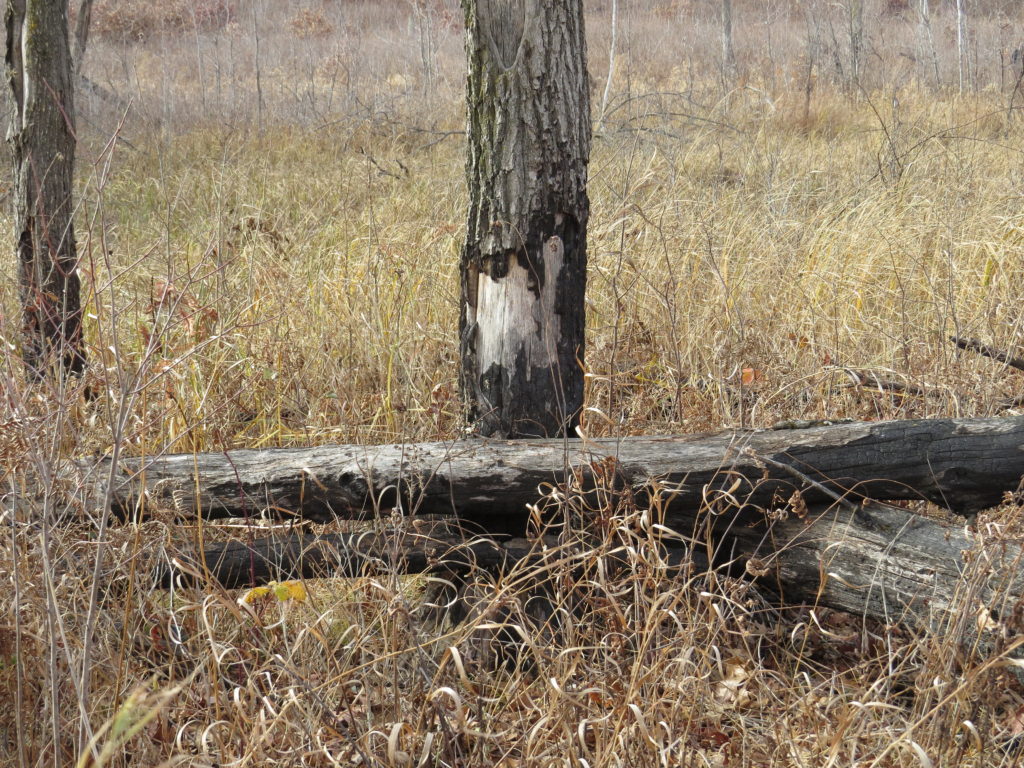
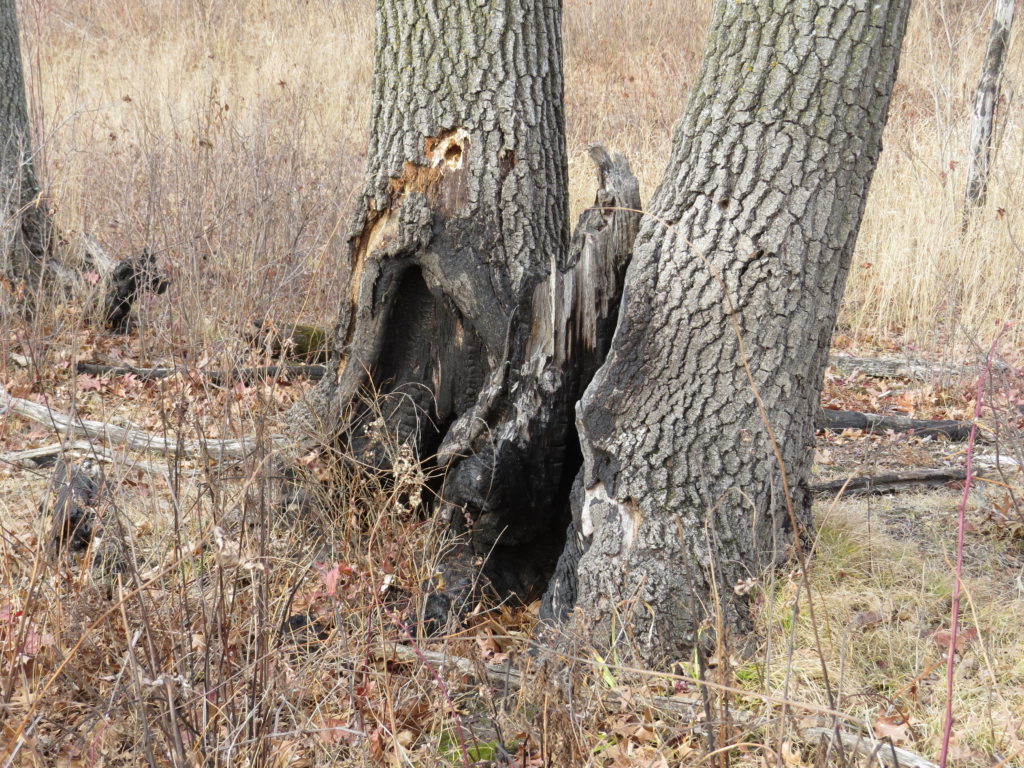
The undergrowth, or I should say, the new growth since there wasn’t much ‘under’ left, was a combination of Hazelnuts, shrubby, multi-stemmed Red Oaks, Raspberries, and some Willows in marshy areas. The purple-stemmed Raspberries conveyed their color in sharp contrast to the brown landscape.
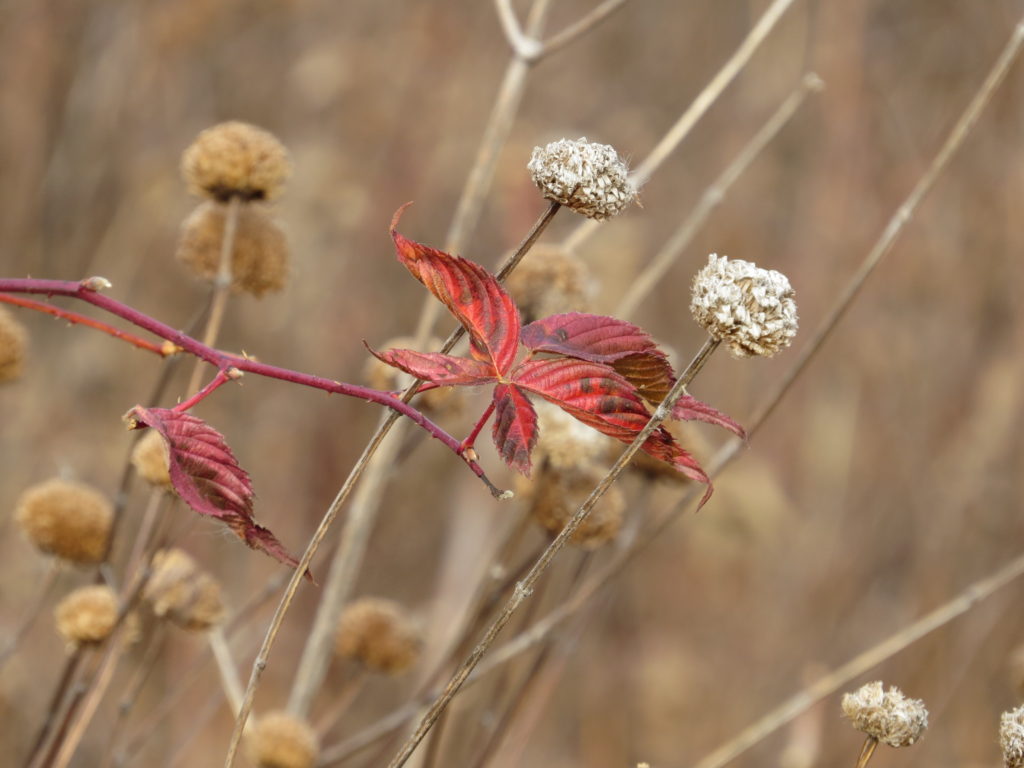
Hazelnuts—the actual nut—are usually long gone by this time of the year, eaten by deer, wild turkeys, squirrels, and pheasants. But the shrubs were so abundant in this area that many nuts remained, peeking out from their curled husks.
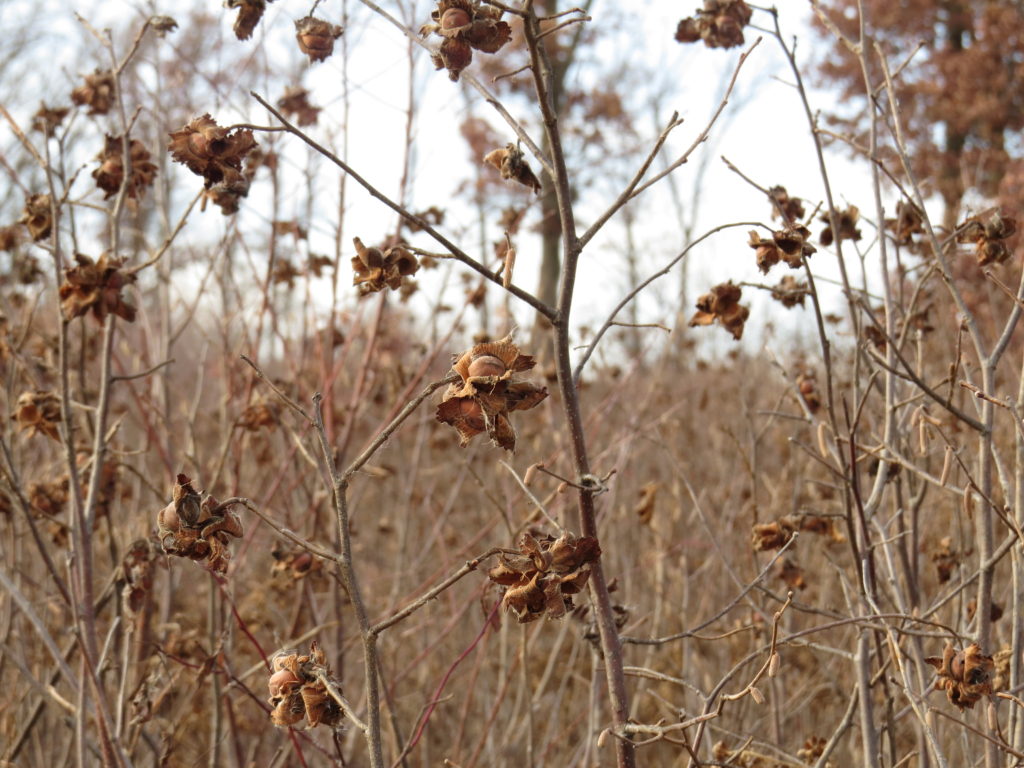
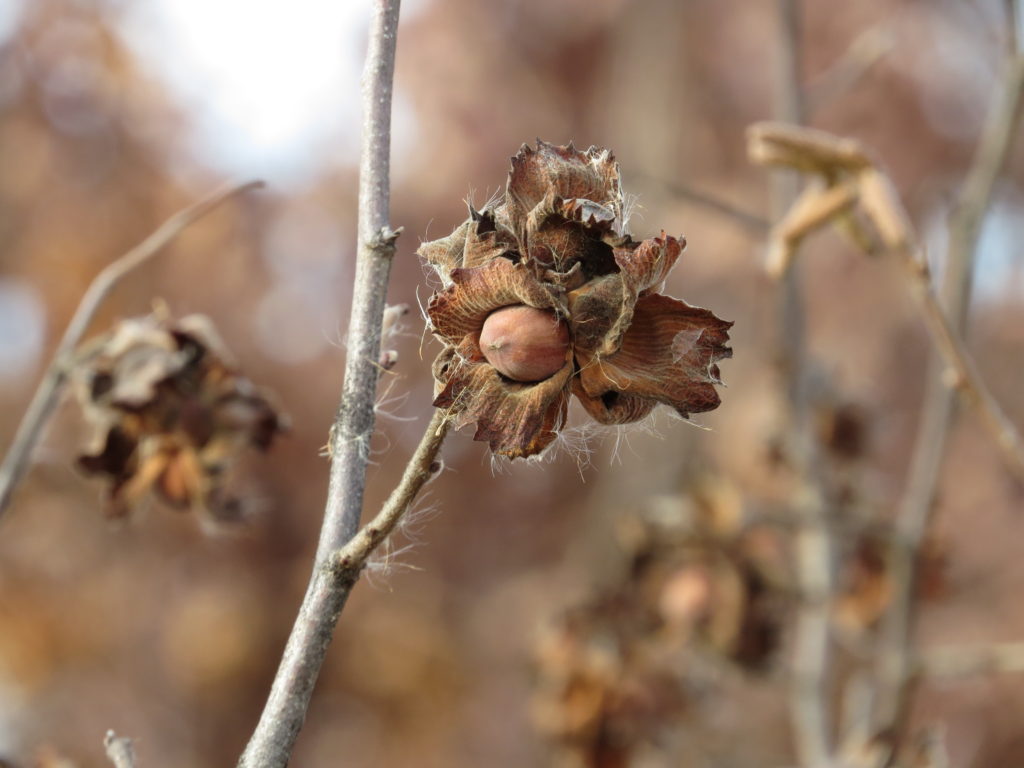
Autumn revealed an ‘unhidden’ nest in the bare branches that had earlier given protection and security to the hard-working bird.
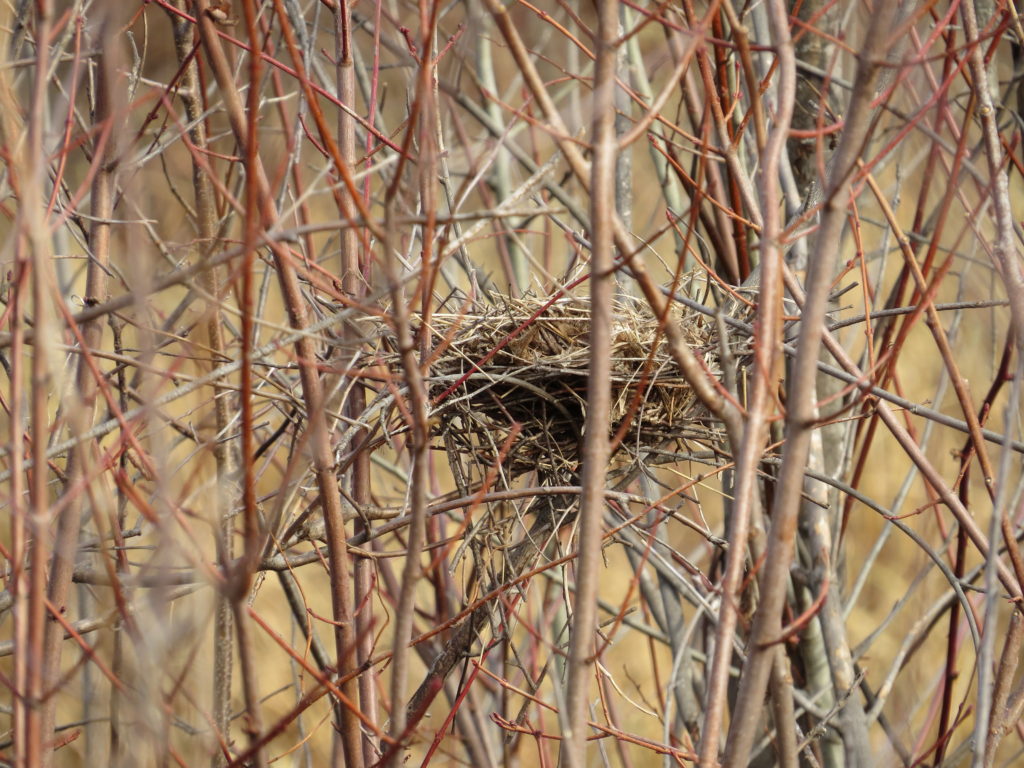
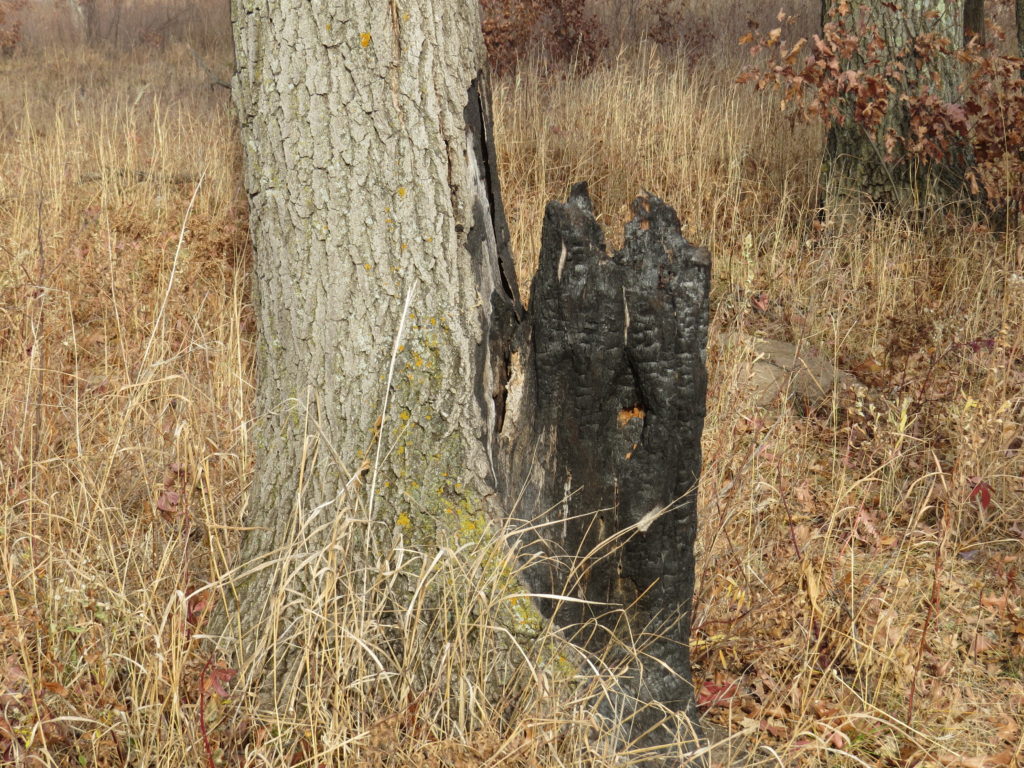
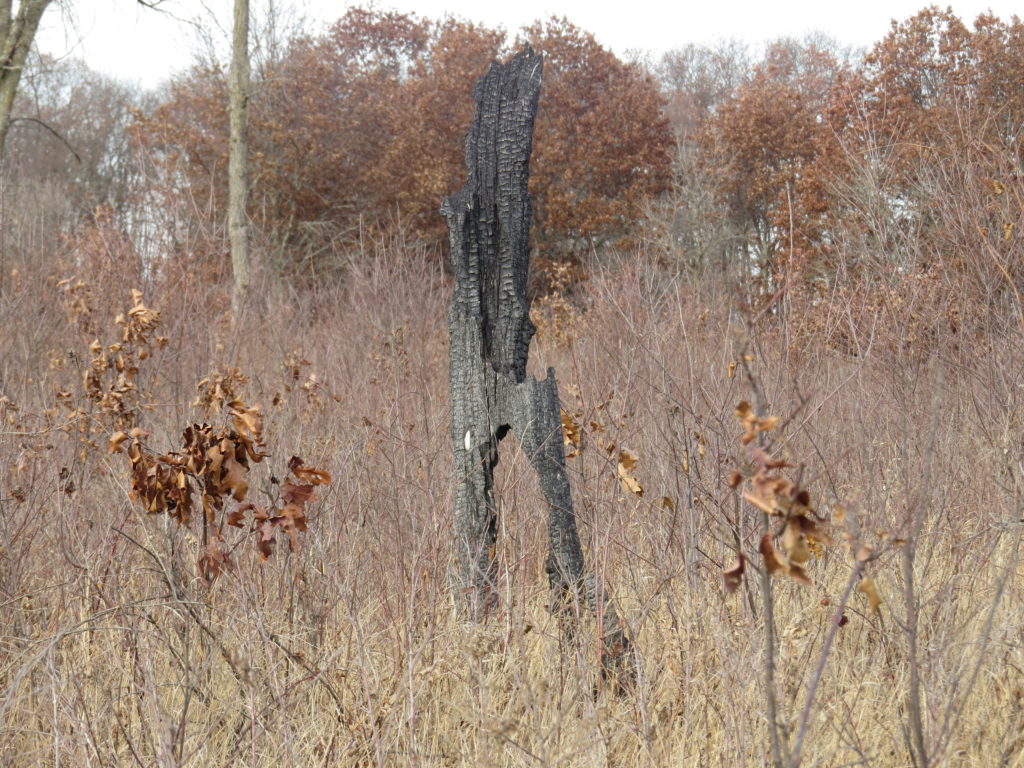
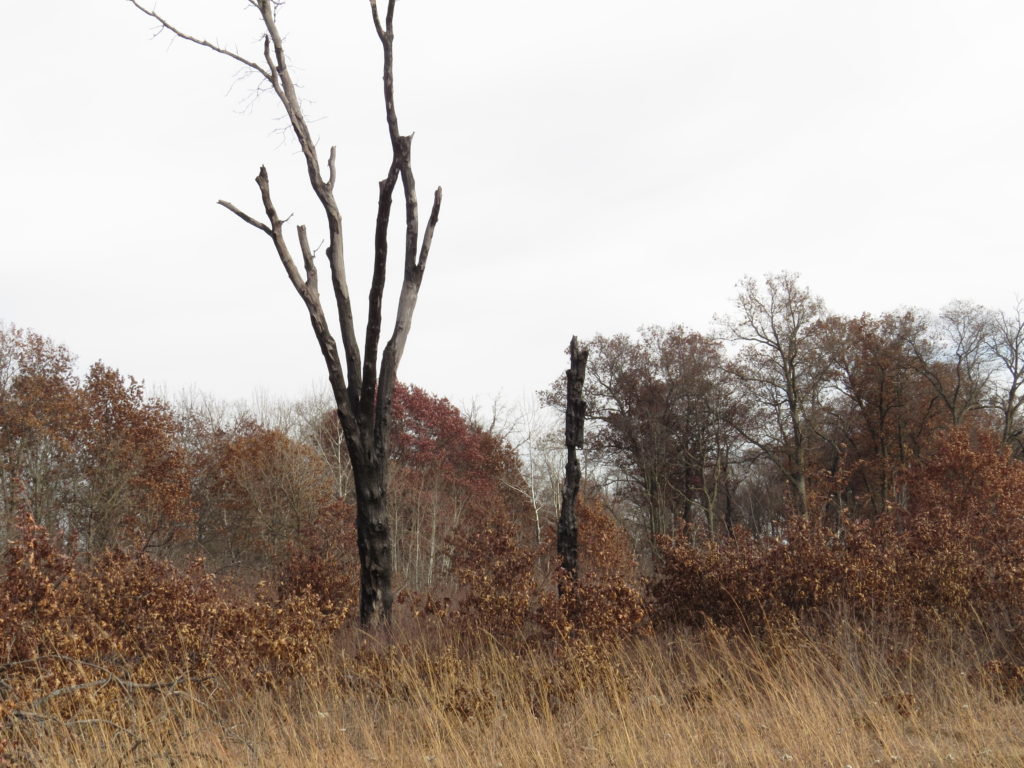
Pocket Gopher mounds were everywhere. I wondered how they could build their burrows in such sandy soil without the walls collapsing all around them. Deer tracks were plentiful also, all along the trail. We joked about the trails being for humans or deer, and Chris noted they were just like us, taking the path of least resistance.
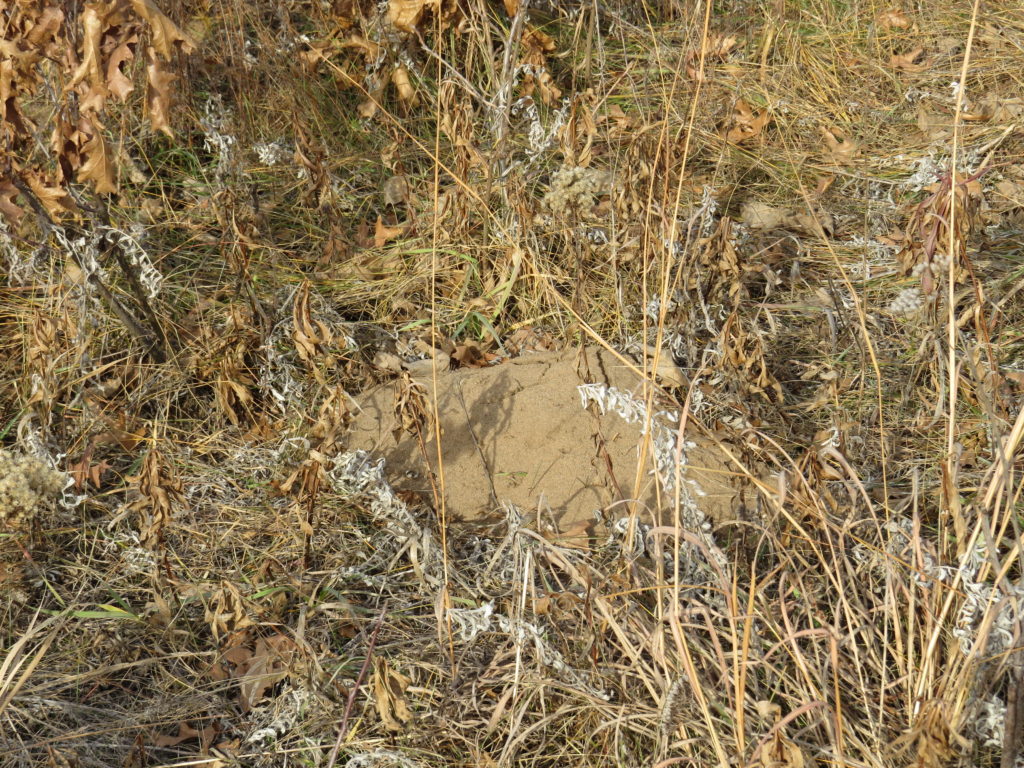
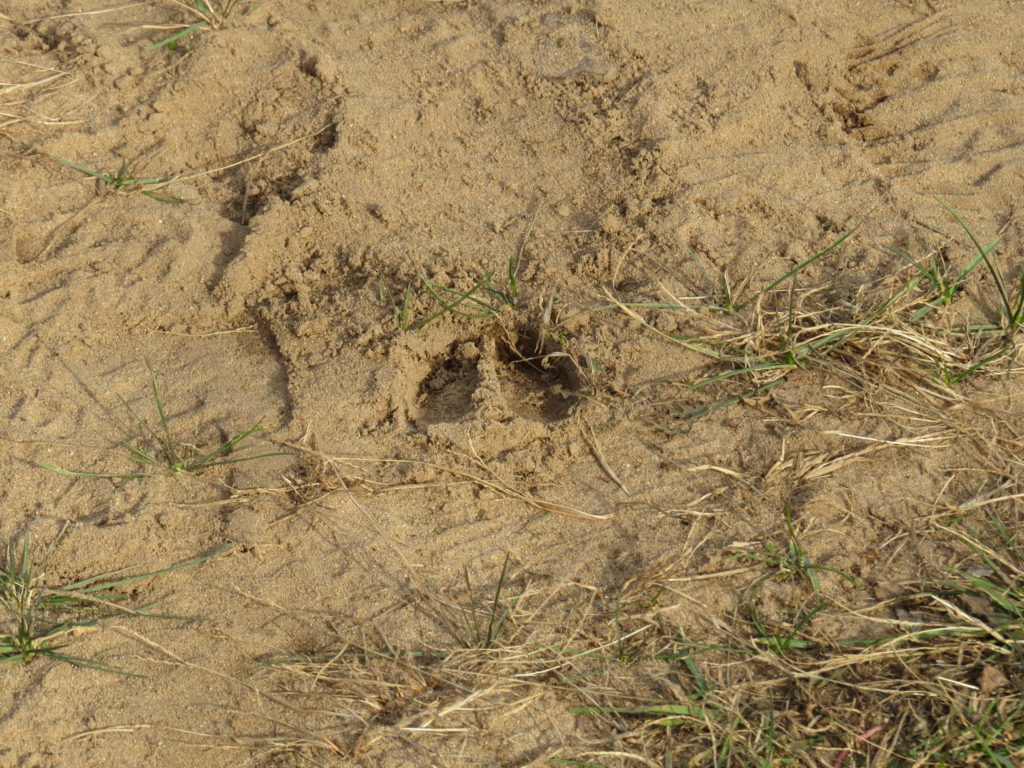
When would this come crashing down?
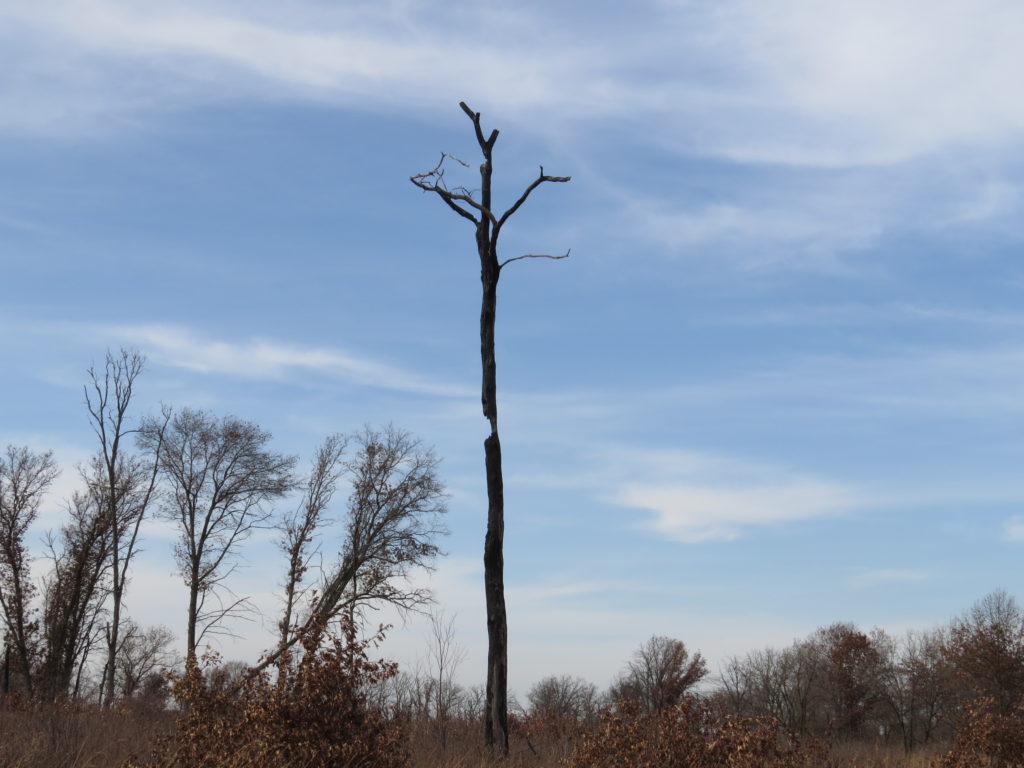
All 30,000+ acres of Sherburne National Wildlife Refuge is a combination of forest, prairie, lakes, and wetlands. It was established as a refuge in 1965 to protect and restore habitat in the St. Francis River Valley for migratory birds and other wildlife. During the months of March through August, most areas are closed to the public to allow the wildlife to breed and raise their young ones without human disturbance.
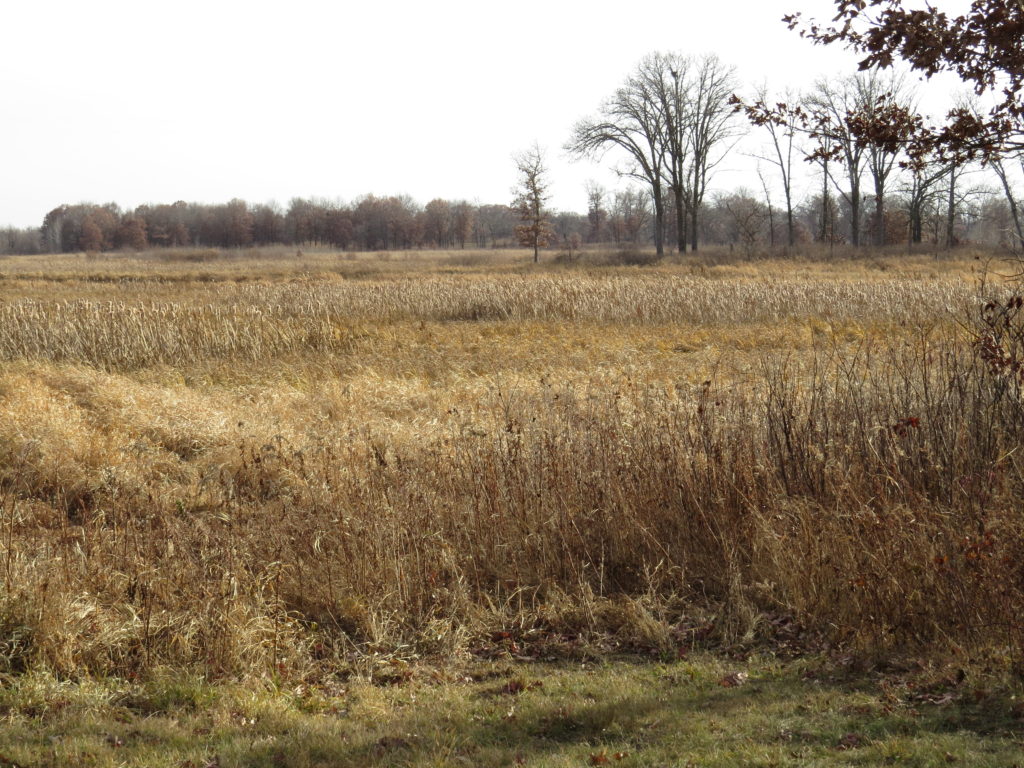
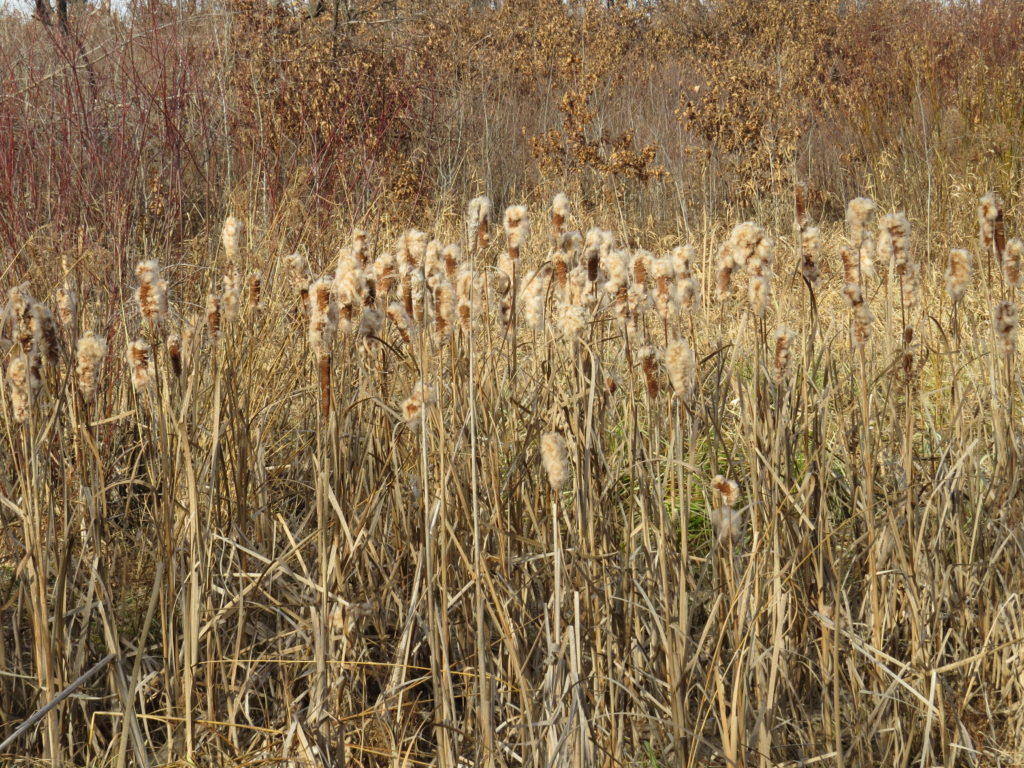
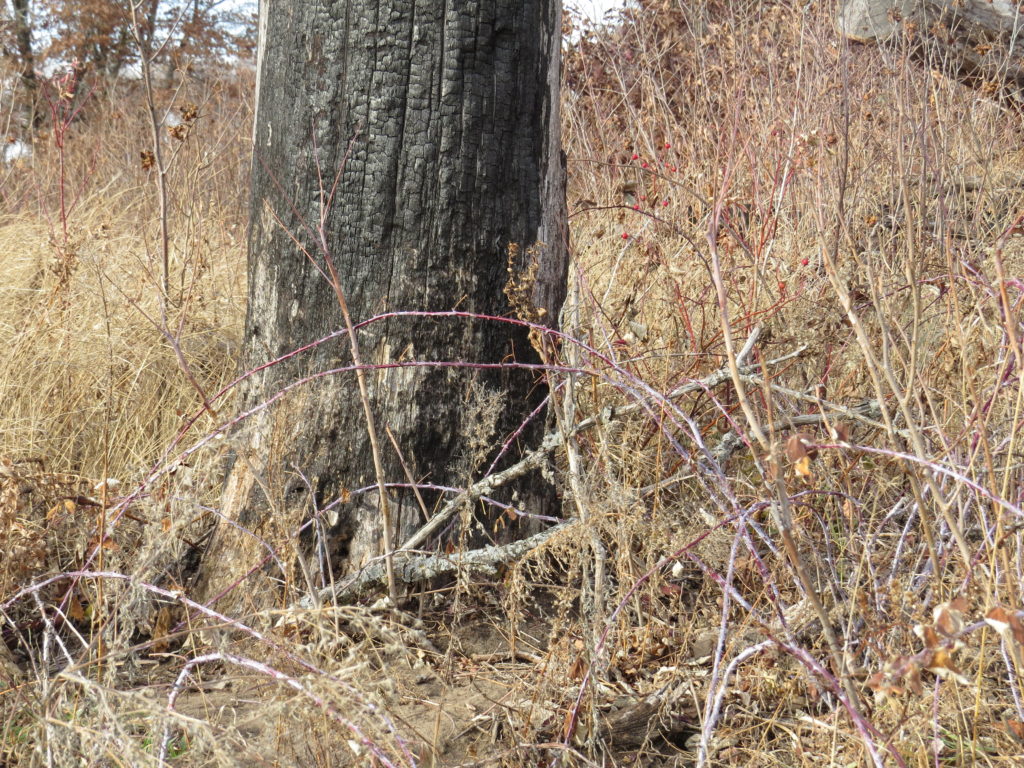
Two-thirds of the way through our hike we came to Buck Lake. More than a dozen Muskrat houses poked up from the marshy water and reeds.
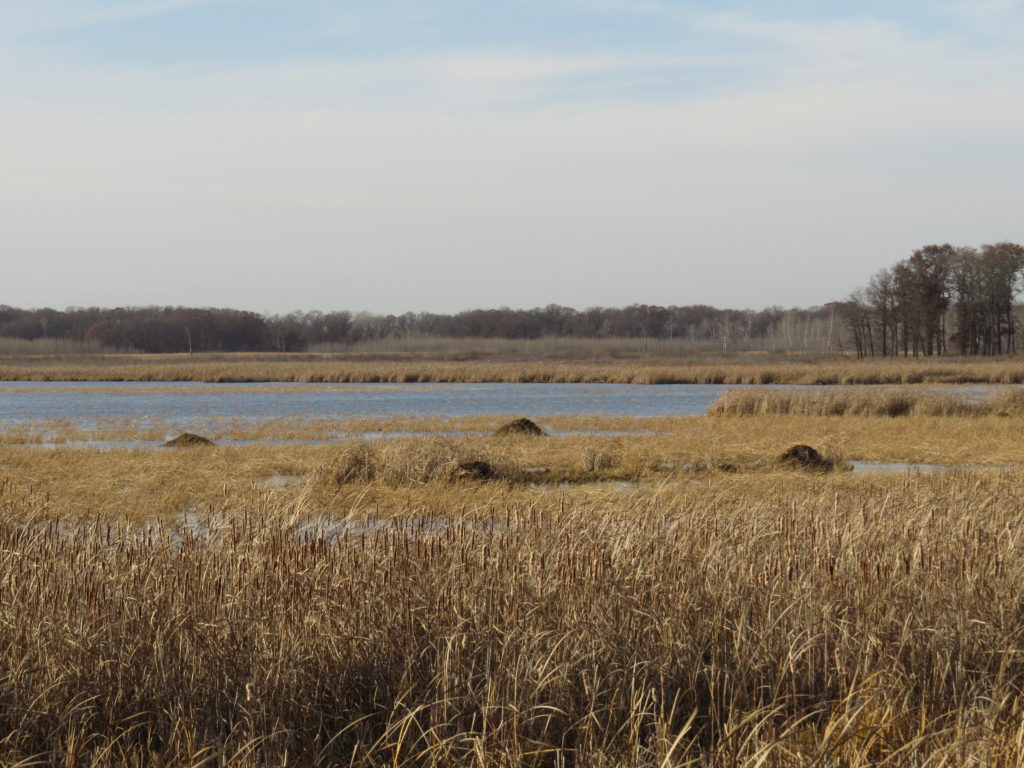
On a mud bar in the middle of the lake, a family of Trumpeter Swans was busy with the business of preening and cleaning their feathers. Beyond the Swans was a flock of ducks feeding in the shallow water with ‘bottoms up.’
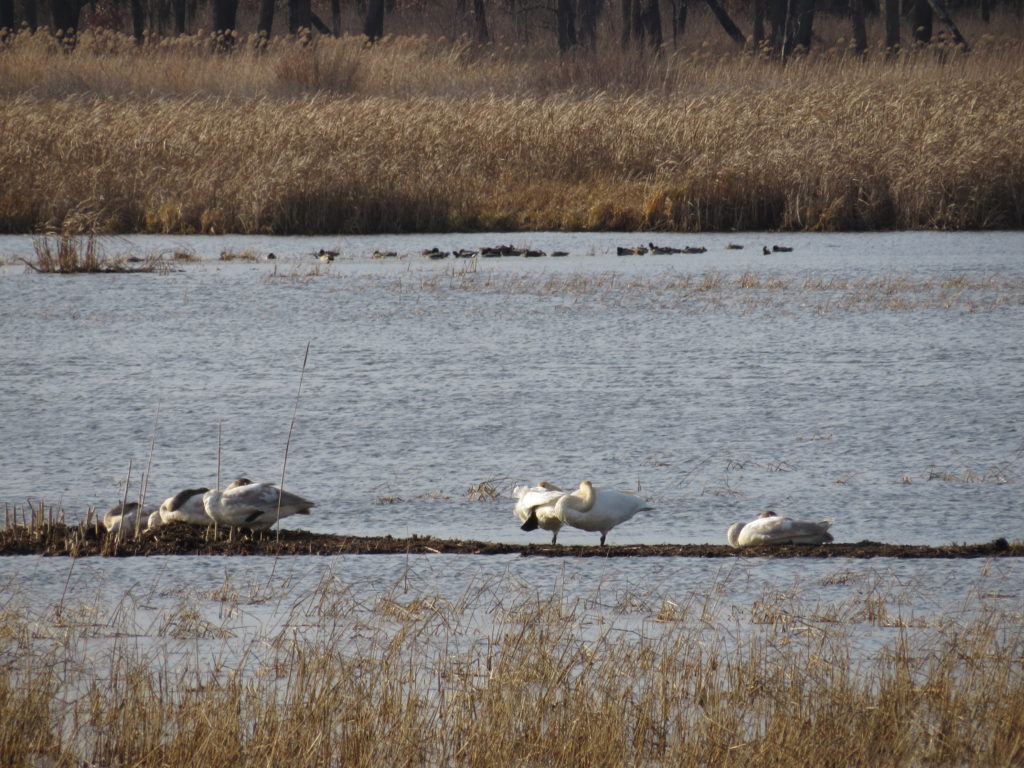
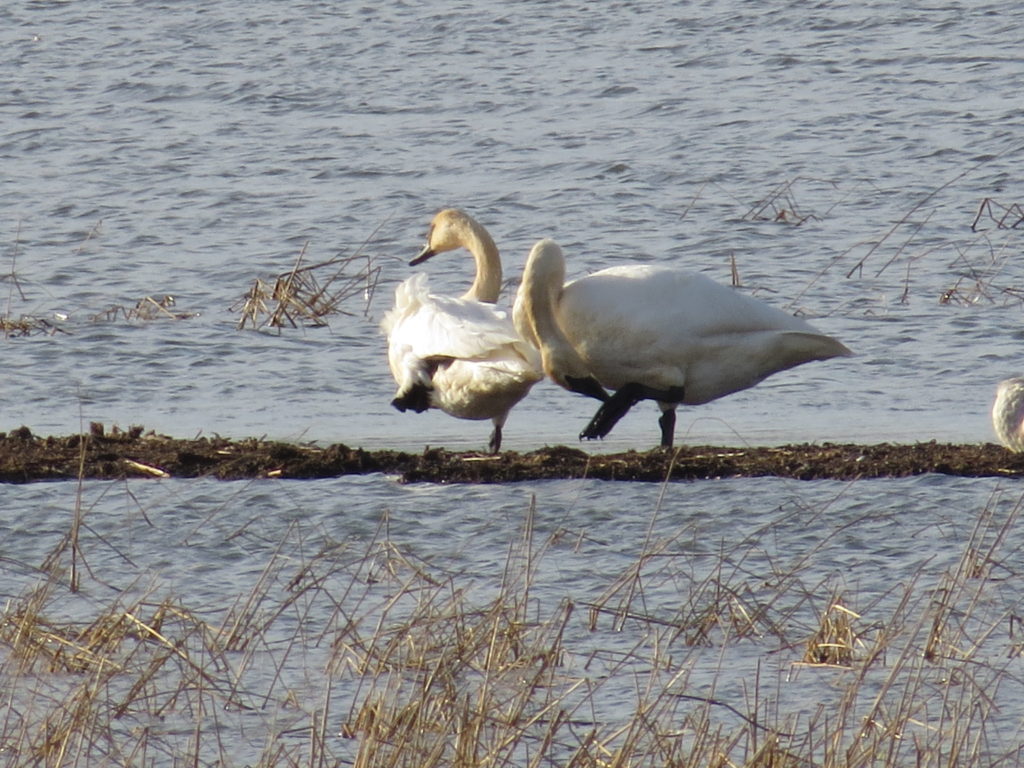
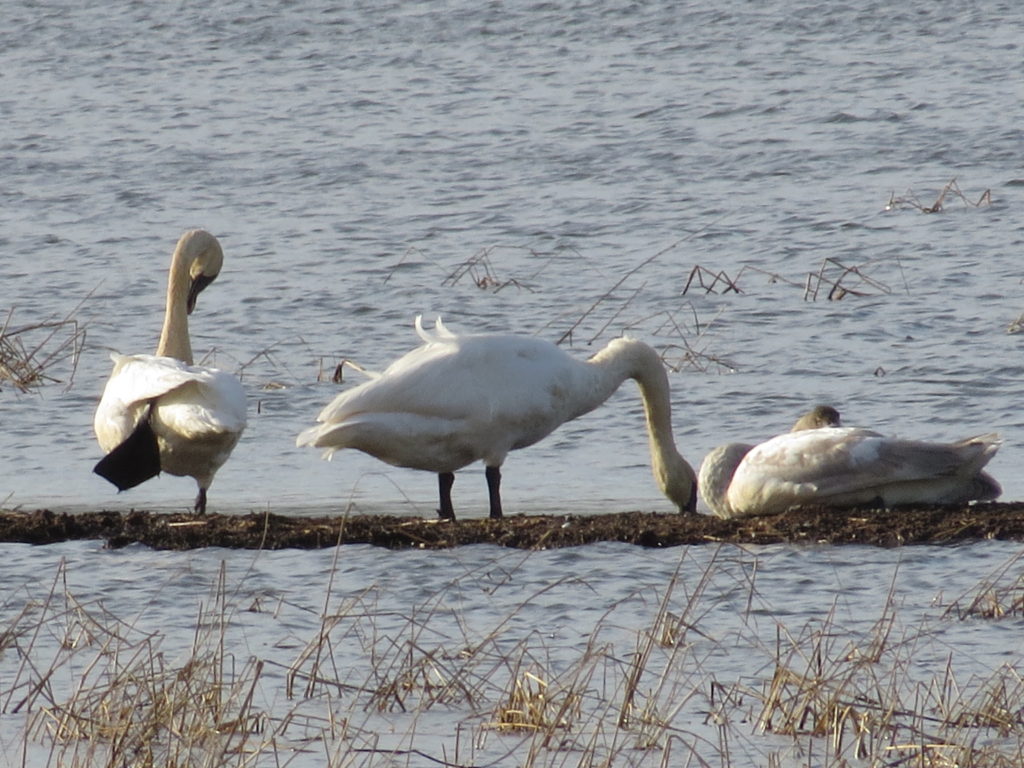
After the preening, Mother and Father Swan slid into the water and glided through the reeds, the wind messing their just-smoothed feathers.
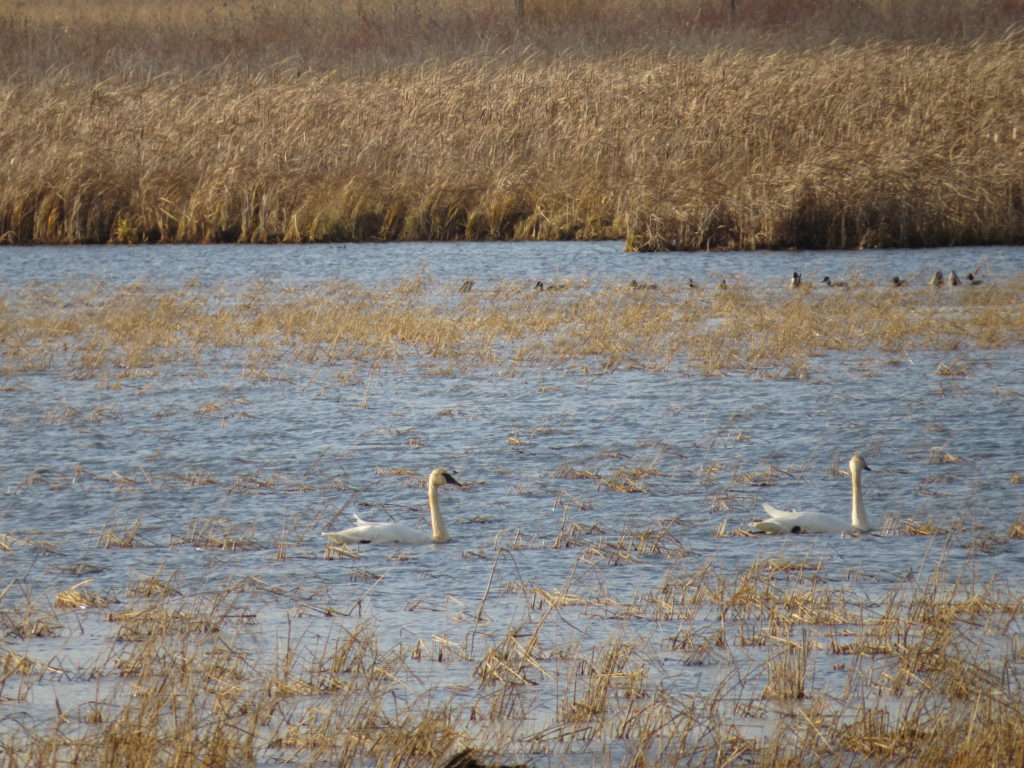
The young cygnets followed their parents, their dusky gray feathers getting ruffled in the wind. They will migrate and winter as a family, and their parents will most likely return to this lake to nest again. Trumpeter Swans and Muskrats have a synergistic relationship—when Muskrat and Beaver populations increase, Swan populations also increase, as they use the tops of the dens for nesting sites.
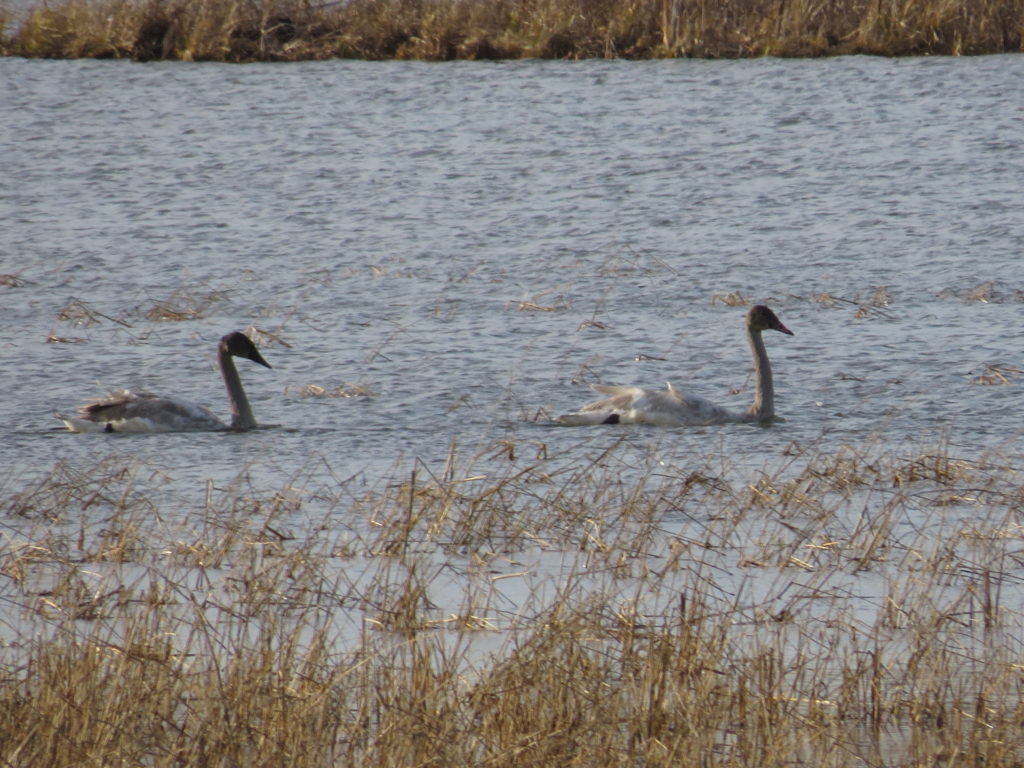
Seven young Swans a swimming…
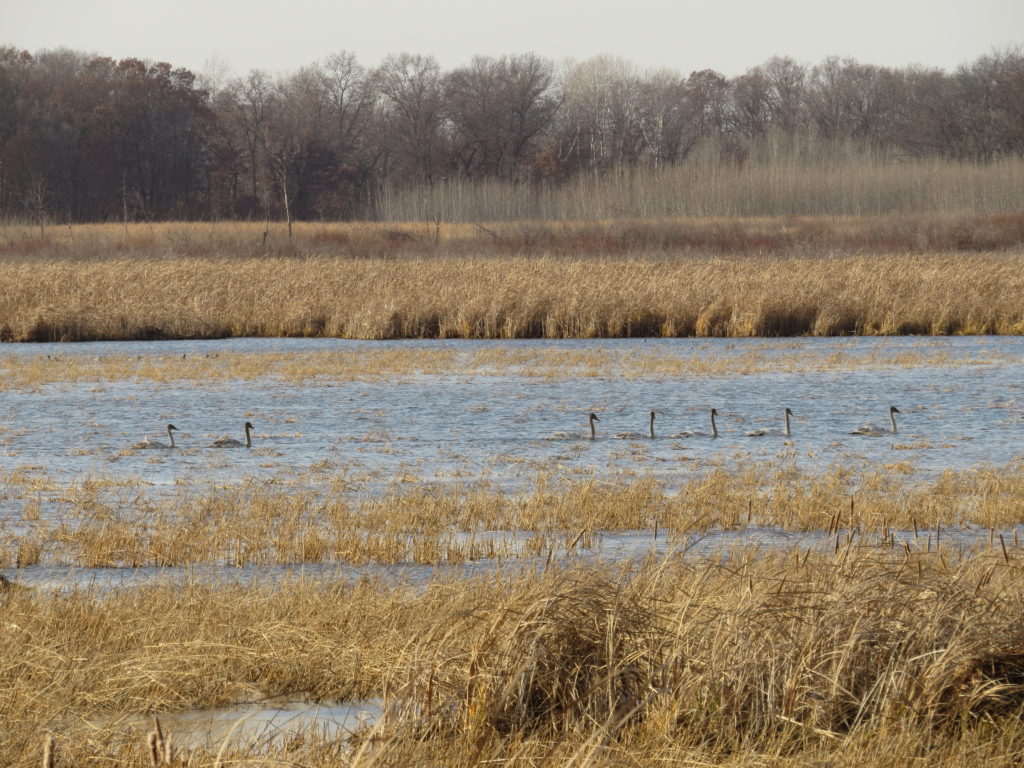
Beyond a Mullein patch was an evergreen forest, which I later learned was referred to as the Enchanted Forest.
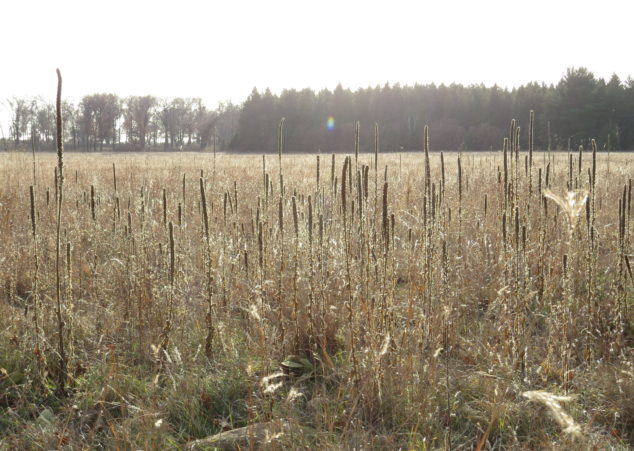
It was a forest of Spruces—the first wholly Spruce forest I remember seeing. The trail wound through the towering trees. It was dark and quiet, so unlike the rest of the hike. It did seem enchanted!
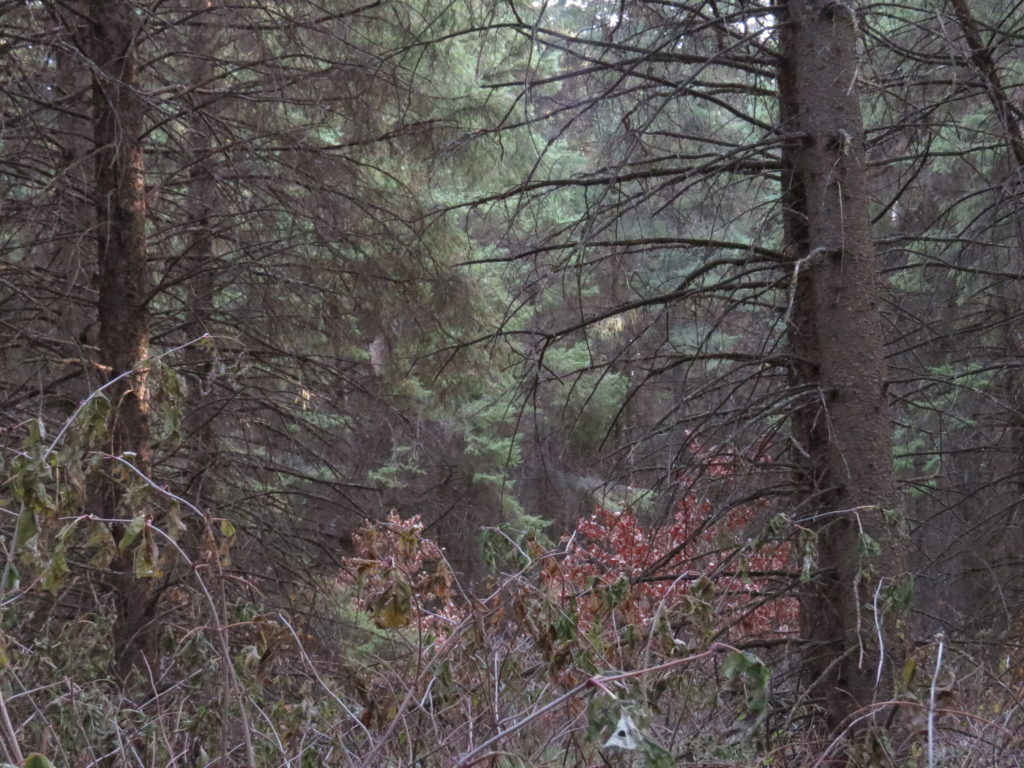
We emerged from the forest with Blue Hill in our sights—the highest point in the refuge. Trees still showed their wounds, the lasting legacy of the destruction of fire.
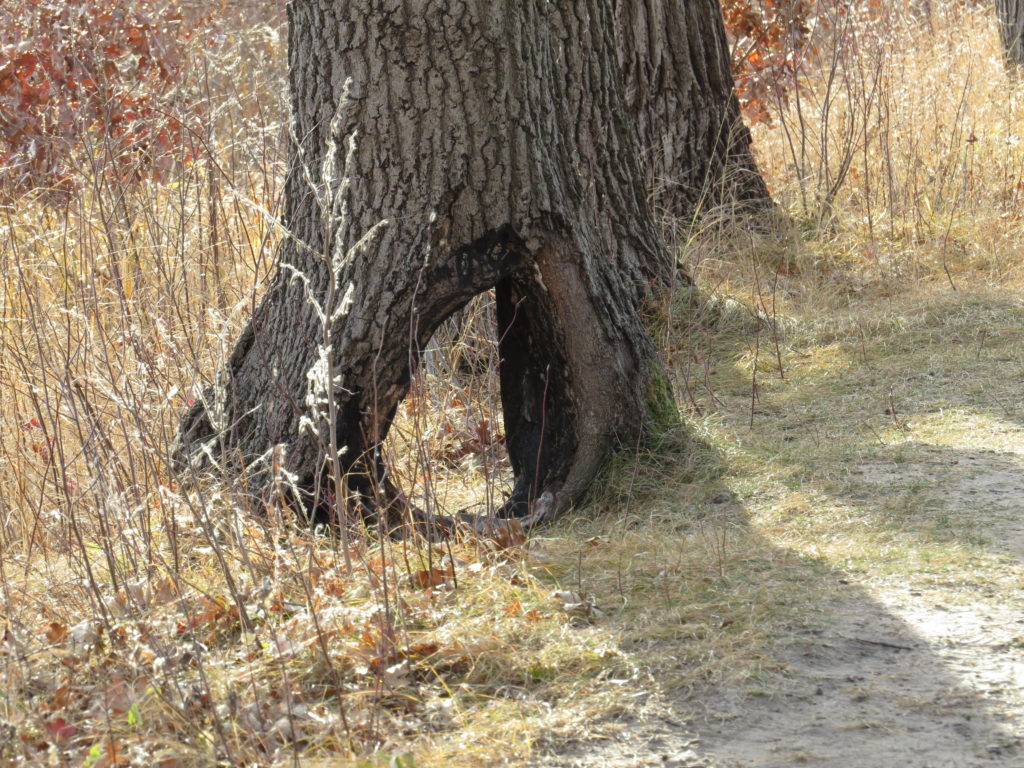
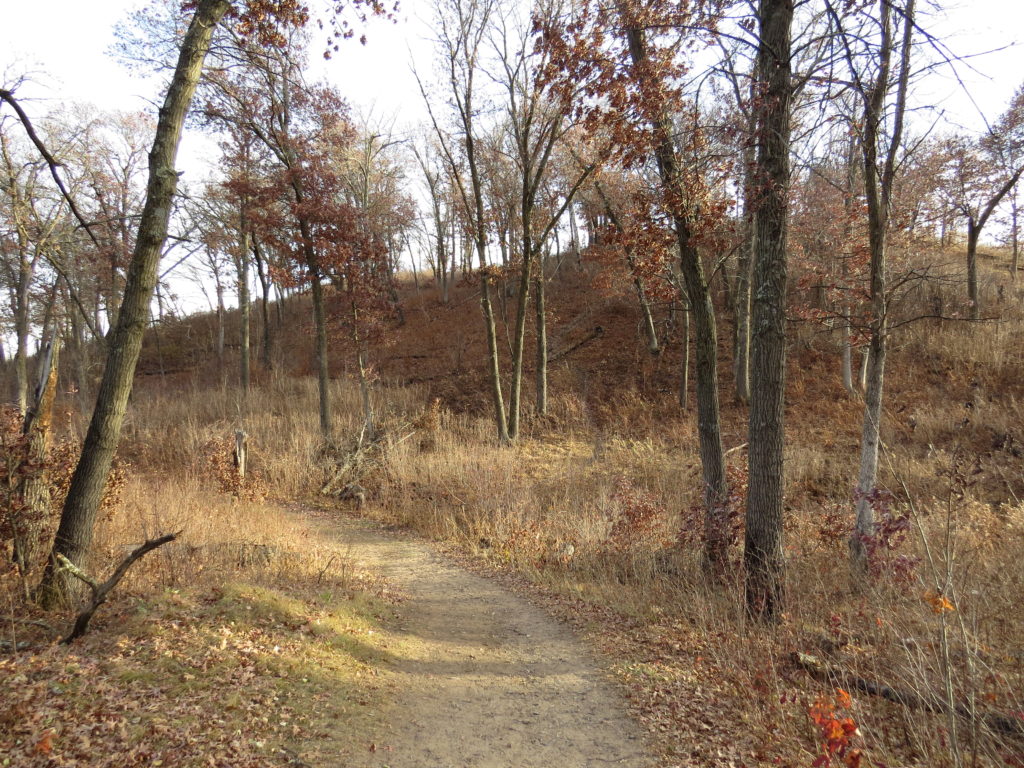
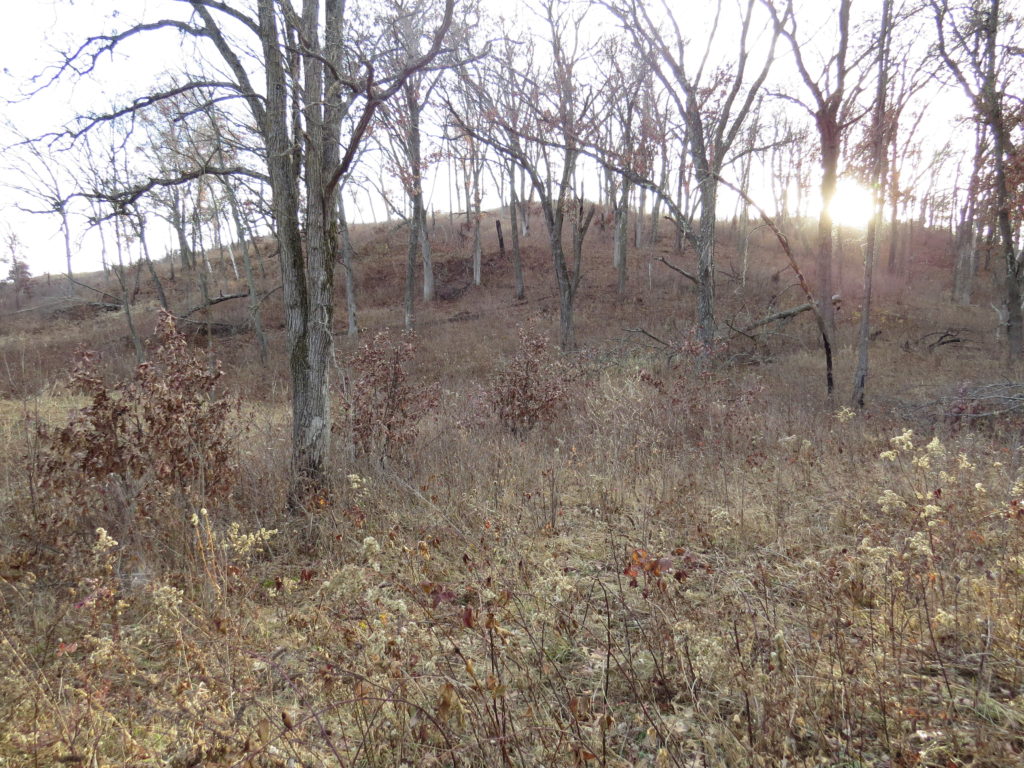
With a little research after I was home, I discovered that Blue Hill had had ‘prescribed’ burns in 2009, 2015, and 2018. Prescribed burns are fires that are carefully planned to take into account temperature, humidity, wind speed and direction. They were being used to restore the Oak savanna by thinning non-native grasses and plants while promoting the health of native vegetation. They had protected the Enchanted Spruce Forest by how and where they set the fire. It sounds good in theory, and good practices were used, but something went wrong. They harmed the very trees they were trying to protect—the towering White Oaks. Fire will take the path of least resistance—most destructive forces will, whether of Nature or mankind. So how do we find refuge in the face of destruction? We can bury ourselves in the sand, not seeing, not listening, hoping for the best. (Though I bet there were plenty of roasted Pocket Gophers after the fire that decimated those trees.) We can run away in fear and busyness, not taking the time to ‘read the landscape’ and gather information. We can sit on our island of entitlement refusing to see the flames that are engulfing those around us. “True refuge demands a complete and utter trust fall into the arms of reality,” says Miles Neale, a Buddhist psychotherapist. It is a brilliant statement. Refuge is defined as a condition of being safe or sheltered from pursuit, danger, or trouble. To truly have refuge we need reality, the reality of facts, evidence, expertise, and truth, along with the reality of love and compassion that emanates from our spiritual beliefs. We don’t want to destroy the very things we are trying to protect. Fall into the refuge of reality.
What a wonderful “explore” you had. Thank you for taking me with you!
It is such a gift to be able to come alongside your curiosity, observations, instincts, and knowledge!
Glad to have you along, AnnElise!